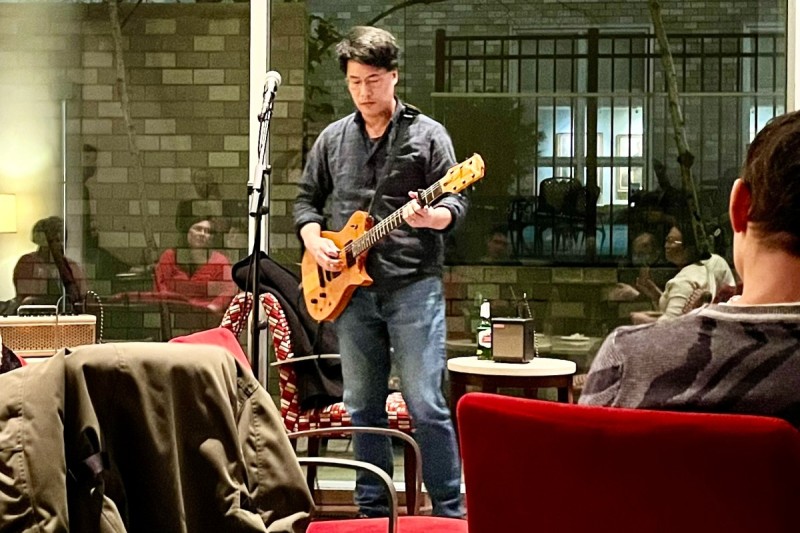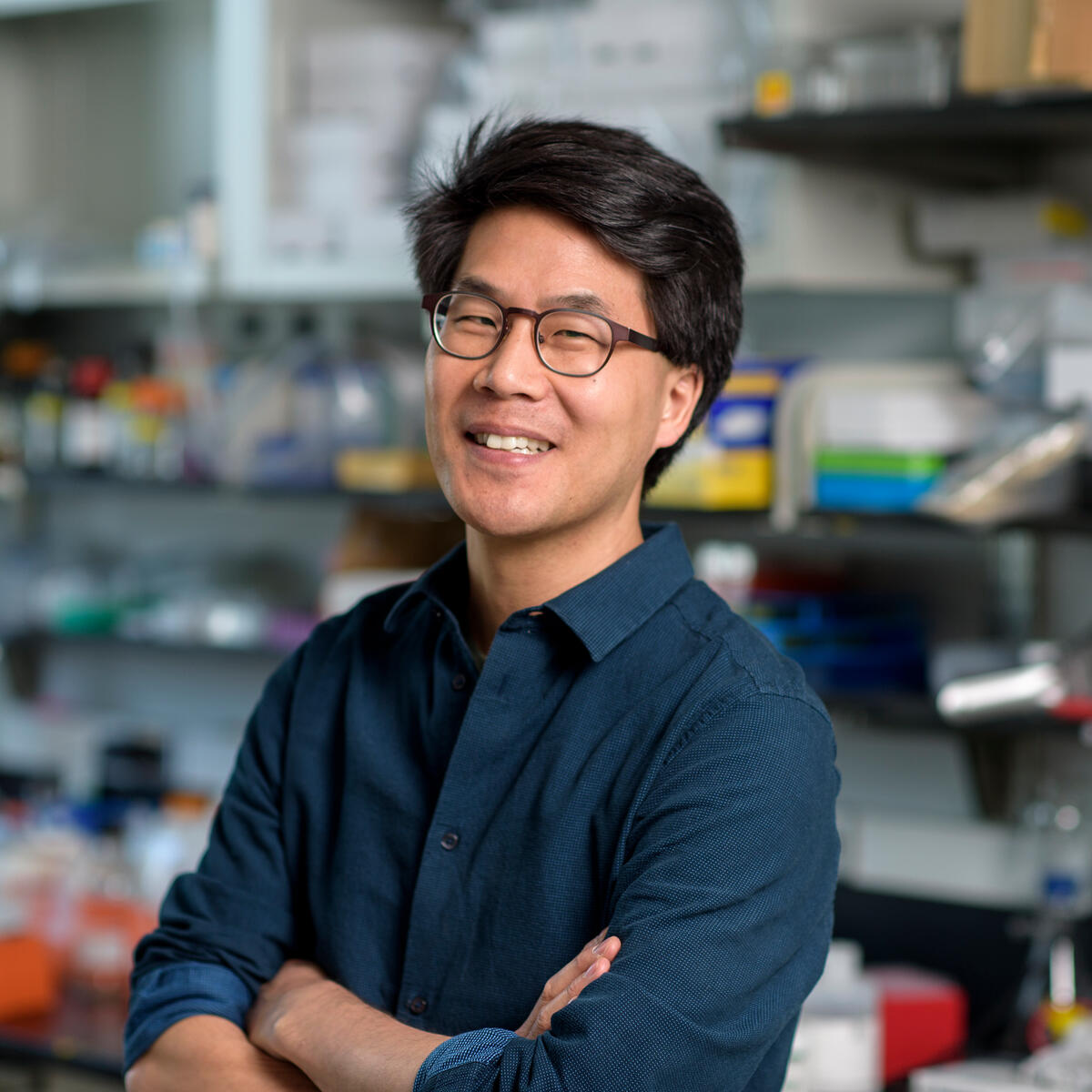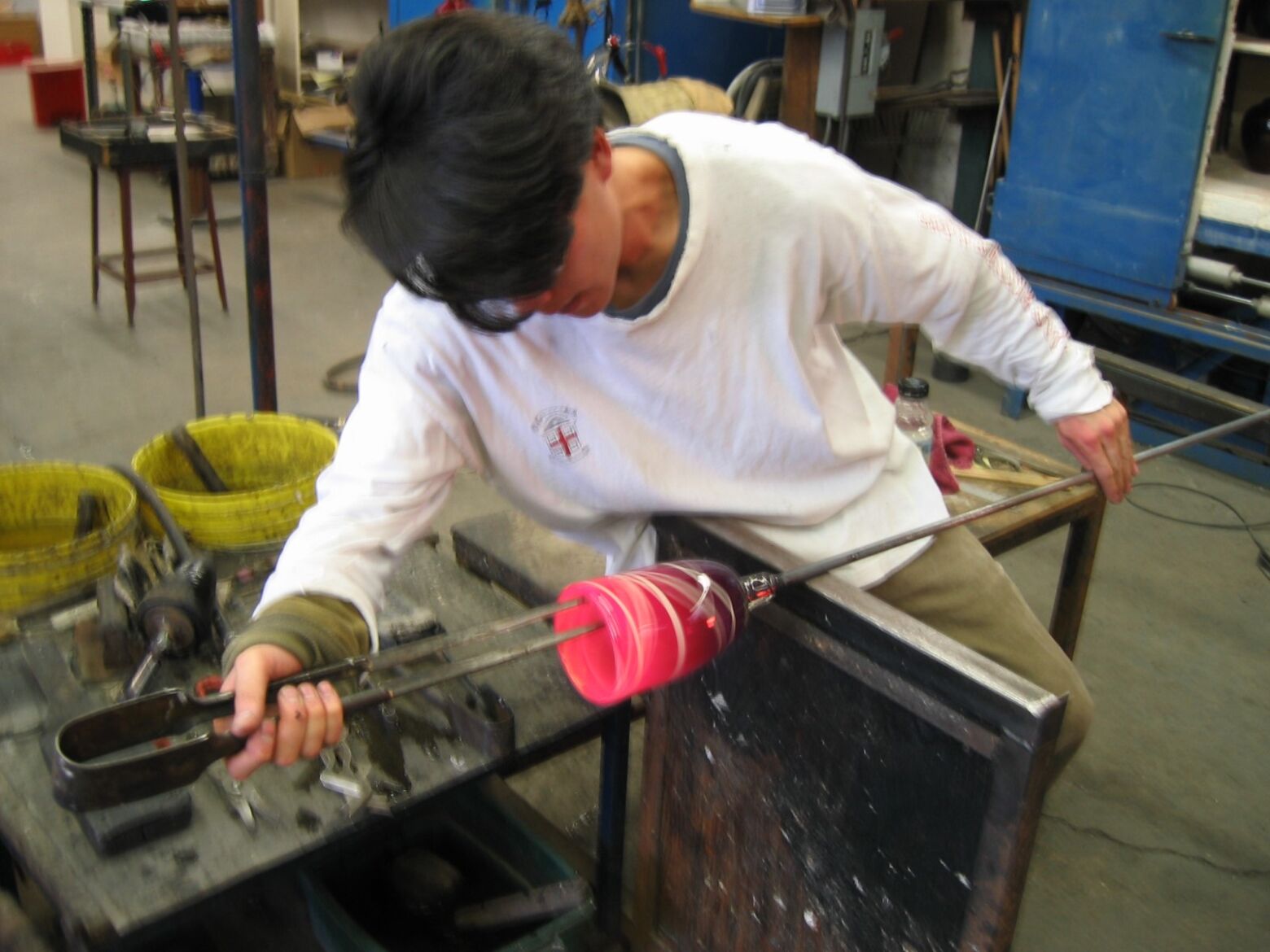
Dr. Eric Lai performs at the December 2023 Sloan Kettering Institute holiday party.
How is a flower like a seashell — and what do they both have in common with math and music?
According to Eric Lai, PhD, a developmental biologist at Memorial Sloan Kettering Cancer Center (MSK), mathematical principles are reflected in the repeating patterns we see in biology, like the spirals in sunflowers and nautilus shells. Patterns are central to the architecture of all living organisms, from those we can see with our eyes down to the cellular and molecular levels.
Dr. Lai sees additional connections. “Patterns are also the foundation of music,” explains Dr. Lai, who leads a lab at MSK’s Sloan Kettering Institute. “The themes and organizing principles of a symphony have analogs in the layout and operation of genes and genomes.”
Searching for Connections

Dr. Eric Lai
Dr. Lai was born in Montana to parents who had emigrated from Taiwan. His father studied wood chemistry and paper pulping, and his dad’s laboratory moves took the family from Montana to the Upper Peninsula of Michigan, and then to upstate New York. It seemed at times like they were in pursuit of snow.
Always curious about the world, Dr. Lai fondly remembers exploring their backyard Michigan woods with his brother, on a quest to discover all he could about plants and wildlife and what connects them.
Nature was a strong and early influence, but Dr. Lai’s life in science was shaped by music and his father.
While Dr. Lai’s father had pursued his own passion for science, he wasn’t eager for his sons to follow in his footsteps. “My parents wanted us to be medical doctors,” Dr. Lai says. Yet exposure to his father’s workplace made a huge impression. “My dad’s lab was a jungle of glassware and probably toxic chemicals,” he says. “It seemed like a playland.”
Music was another profound influence. From the age of 4, Dr. Lai played the violin. A biochemistry major in college, he also studied music theory and composition. Later, he taught himself guitar and played in several indie rock bands. Music, he says, directly impacted his appreciation of biological and molecular patterns, helping him identify underlying motifs in DNA and RNA. This led him to study how DNA and RNA regulate genes and generate cell types, which is the major focus of his lab.
Dr. Lai first became interested in developmental biology at Harvard, where he did his undergraduate thesis in the lab of Gary Ruvkun, PhD. As a molecular geneticist, Dr. Ruvkun uses the nematode worm as a model to study developmental processes. “Many aspects of my career flow from things I learned in Gary’s lab in college,” Dr. Lai says, including the Ruvkun lab’s landmark discovery of gene regulation by small RNAs.
Later, Dr. Lai earned his PhD from the University of California, San Diego, where he studied the nervous system of the fruit fly with James Posakony, PhD. As a postdoc, he joined the lab of Gerry Rubin, PhD, at UC Berkeley, whose team had spearheaded the sequencing of the fruit fly genome — only the second animal genome to be sequenced. In these labs, Dr. Lai explored how cells talk to each other and determine their fates, and learned how to apply genome-wide approaches for comprehensive perspectives.
In 2005, he joined MSK to establish his lab at SKI, where he is a Member of the Developmental Biology Program. “I am extremely fortunate to have this career,” he says. He appreciates MSK’s “excellent basic research and world-class hospital,” noting that connections between the two are critical to advance cancer care.
‘Chance Favors Only the Prepared Mind’ —Louis Pasteur
For Dr. Lai, a deep and abiding curiosity about the world has been the best preparation for his career in science. He also credits his liberal arts education and diverse coursework. “Having a broad academic training can enable one to make unexpected connections and insights in science,” he says.
Meanwhile, his passion for the arts — especially music and glassblowing — has taught him discipline and patience, which is essential in science.
“A lot of science is not glamorous,” he explains. “Discovery is generally not a series of ‘aha’ moments. Although it’s an amazing experience when that happens, much of productive science involves becoming adept at your go-to techniques, learning how to design informative experiments, and repeating tests to get robust data that you can build upon.”
As with the arts, he says: “You need a solid foundation of skills and knowledge before you can unleash creativity.” But, in the end, “the best science is also really a creative endeavor.”
“Aha” moments may not be commonplace, but Dr. Lai is awed by science’s rapid progress. “Science has been revolutionized by many techniques that didn’t exist until recently,” he says.
Many of those techniques are the result of basic research, which is a vital pursuit of MSK’s scientific community. “My lab does fundamental research because we hope to learn about the rules of life, which are often broken in disease,” Dr. Lai says. “In the past few years, basic research has yielded Nobel Prize-winning discoveries such as CRISPR-Cas9, RNA modifications, RNA interference, and more. Importantly, all of these have been translated into human therapies, showing us the power of foundational science.”
Connections for Life
In addition to exploring scientific questions, Dr. Lai enjoys the social side of science. He looks forward to developing connections with other researchers at meetings and conferences. Talking science and establishing new collaborations “helps us extend what we can do in the lab, and lets us enter new fields and disciplines,” he explains. “I prize the fact that I am always learning.”
Outside of his lab, Dr. Lai is committed to nonscientific pursuits, whether it’s attending concerts and shows, blowing glass, or going to the climbing gym with his wife and their 12-year-old daughter, an avid rock climber. His family also loves to wander New York City, “in search of forgotten histories and overlooked treasures,” he says.
Decades of exploration and discovery — and searching for connections — have confirmed for Dr. Lai that building a meaningful life, even more than playing music or doing science, is the ultimate creative act.
Follow Dr. Lai’s art, science, and adventures on X.

Dr. Eric Lai engages in one of his passions – glass blowing.